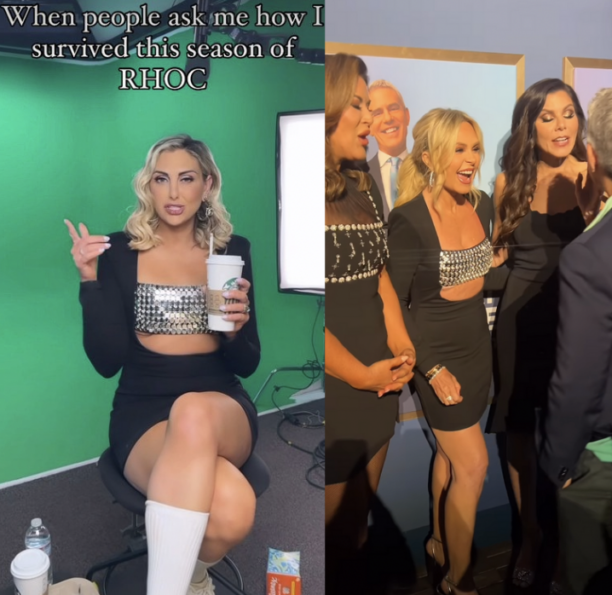Sutton Stracke’s White Peplum Cardigan
Sutton Stracke’s White Peplum Cardigan / Real Housewives of Beverly Hills Instagram Fashion May 2024
Sutton Stracke continues with sweater weather this spring in a stunning white peplum cardigan. Sharing her Saturday OOTD on Instagram with a sun hat (that makes us all think of Kathy Hilton), her chic layer is perfect for a chilly day. So catch Sutton’s Saturday vibes with a new cardigan for your closet below!
Best in Blonde,
Amanda

Click Here for Additional Stock
Photo: @suttonstracke
Instagram By Request
-

Melissa Gorga’s White Jumpsuit
-

Amanda Batula’s White Vest
-

Emily Simpson’s Red and Gold Cutout Dress
-

Lisa Barlow’s Black Short Sleeve Tee
-

Sutton Stracke’s Blue Strapless Midi Dress
-

Melissa Gorga’s Black Cutout Mini Dress
-

Brynn Whitfield’s White Embellished Gown
-

Tracy Tutor’s Brown Striped Shirt Dress
-

Brynn Whitfield’s Blue Stripped Poplin Shirt
-

Katie Maloney + Ariana Madix Floral Dresses
-

Brynn Whitfield’s Black Cutout Prada Mini Dress
-

Erin Lichy’s Pinstriped Pants
-

Lisa Barlow’s Clear Aviator Sunglasses
-

Paige DeSorbo’s Tan Cropped Leather Jacket
-

Emily Simpson’s Pink Colorblock Cutout One Piece Swimsuit
-

Gina Kirschenheiter and Tamra Judge’s Black Cutout Dress with Sequins
-

Emily Simpson’s Orange One Shoulder Dress
-

Sutton Stracke’s Pink and Red Printed Dress
-

Madison LeCroy’s Black Collared Long Sleeve Dress
-

Paige DeSorbo’s Blue Off The Shoulder Dress
-

Ciara Miller’s Tan Flower Print Halter Mini Dress
-

Cameran Eubanks’ Green Printed Shirt Dress
-

Paige DeSorbo’s White Lace Trim Long Sleeve Pajama Set
-

Kyle Richards’ Light Denim Shirt
-

Tamra Judge’s Denim Overalls
-

Ally Lewber’s Blue Ombre Strapless Mini Dress
-

Emily Simpson’s Blue Striped Ruffle Mini Dress
-

Tamra Judge’s Green Floral Print Mini Dress
-

Kyle Richards’ Black O Ring Maxi Dress
-

Melissa Gorga’s Green Strapless Satin Dress on WWHL
-

Cameran Eubanks’ Pink and Orange Printed Midi Dress
-

Gina Kirschenheiter’s Blue Tweed Mini Dress
-

Tamra Judge’s Pink Cutout Strapless Dress
-

Brynn Whitfield’s Neon Square Neck Maxi Dress
Latest Posts
Originally posted at: Sutton Stracke’s White Peplum Cardigan
Read More








































